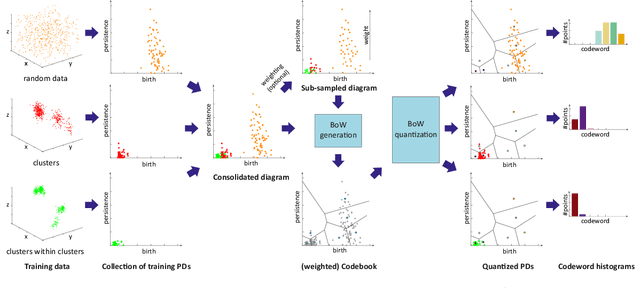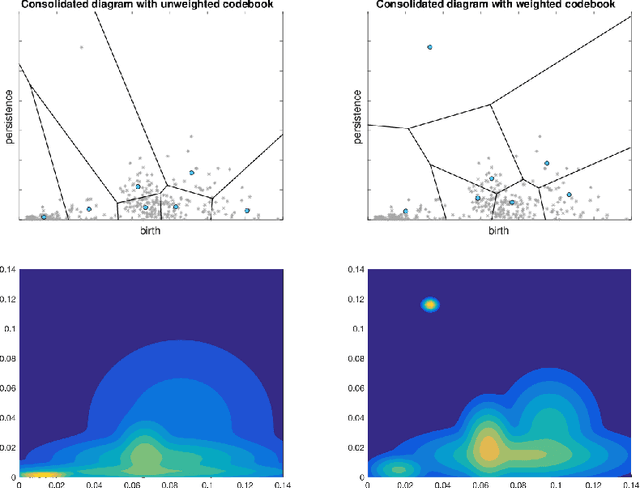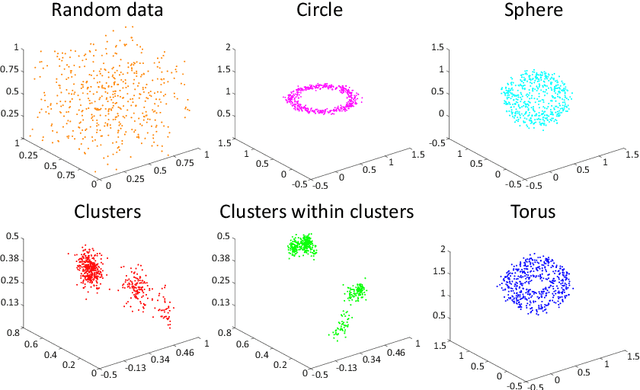Bartosz Zielinski
Persistence Codebooks for Topological Data Analysis
Feb 22, 2018



Abstract:Topological data analysis, such as persistent homology has shown beneficial properties for machine learning in many tasks. Topological representations, such as the persistence diagram (PD), however, have a complex structure (multiset of intervals) which makes it difficult to combine with typical machine learning workflows. We present novel compact fixed-size vectorial representations of PDs based on clustering and bag of words encodings that cope well with the inherent sparsity of PDs. Our novel representations outperform state-of-the-art approaches from topological data analysis and are computationally more efficient.
A Study on Topological Descriptors for the Analysis of 3D Surface Texture
Oct 29, 2017



Abstract:Methods from computational topology are becoming more and more popular in computer vision and have shown to improve the state-of-the-art in several tasks. In this paper, we investigate the applicability of topological descriptors in the context of 3D surface analysis for the classification of different surface textures. We present a comprehensive study on topological descriptors, investigate their robustness and expressiveness and compare them with state-of-the-art methods including Convolutional Neural Networks (CNNs). Results show that class-specific information is reflected well in topological descriptors. The investigated descriptors can directly compete with non-topological descriptors and capture complementary information. As a consequence they improve the state-of-the-art when combined with non-topological descriptors.
 Add to Chrome
Add to Chrome Add to Firefox
Add to Firefox Add to Edge
Add to Edge